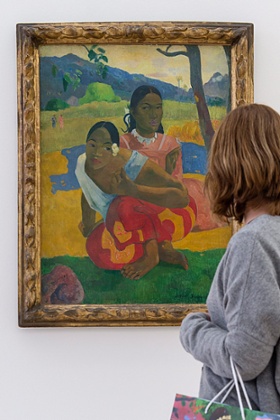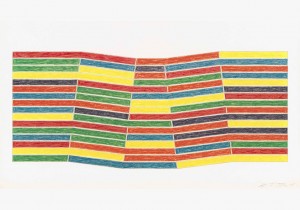Everyone has their price, so the saying goes, and it appears that almost $300m (£200m) was the right price for one Swiss art collector.
Rudolf Staechelin was the owner of the painting Nafea Faa Ipoipo? or When Will You Marry? by Paul Gauguin, but it is now thought to have become the most expensive artwork he sold it.
The 62-year-old former Sotheby’s executive has a family trust that owns more than 20 impressionist and post-impressionist works, which had been on loan to the Kunstmuseum in Basel for almost 50 years.
Staechelin confirmed to the New York Times that the 1892 oil painting of two Taihitian women had been sold, but did not confirm the identity of the buyer, nor the price. It is believed to have been bought by Qatar, which in 2011 paid a record $259m for The Card Players by Paul Cezanne.
He said: “The real question is why only now? It’s mainly because we got a good offer. The market is very high and who knows what it will be in 10 years. I always tried to keep as much together as I could. Over 90% of our assets are paintings hanging for free in the museum.”

Staechelin’s collection was put together by his grandfather, who became friends with artists and made most of his purchases during and after the first world war. He later advised the Kunstmuseum, which took his collection as a loan following his death in 1946.
Gauguin visited Tahiti twice. His first trip was in 1891 after becoming estranged from his wife and was facing financial difficulties given the unpopularity of his art.
He came up with the idea of making the voyage to paint illustrations for the most popular novel at the time, Pierre Loti’s The Marriage of Loti.
Nancy Mowll Mathews, author of Paul Gauguin, An Erotic Life, told the Observer in 2001: “He portrayed the natives as living only to sing and to make love. That’s how he got the money from his friends and raised the public’s interest in his adventure. But, of course, he knew the truth, which was that Tahiti was an unremarkable island with an international, westernised community.”
He was said to have had sexual relations with several of the women he painted in Tahiti, which include Vairaumati te Ioa, or Her Name is Vairaumati.
His paintings were met with indifference when he returned to Paris two years later, and he then wrote an autobiographical account of his time in Tahiti called Noa Noa. According to Mathews, it was “the beginning of Gauguin’s writing of an erotic life for himself”.
Those efforts also failed and the artist made a second trip to Tahiti. “He returned expecting the erotic idyll that was only ever a figment of his imagination,” Mathews said. “Of course, he didn’t find it and … he died a twisted and bitter man, having alienated everyone both at home and in Tahiti. It’s a sad story of a man who believed his own fiction.”
Like so many artists, Gauguin’s talent was not fully recognised until after his death, which came in 1903 at the age of 54 from a morphine overdose.
He was a major influence on 20th century greats such as Pablo Picasso, Joan Miró and Henri Matisse.
Nafea Faa Ipoipo? can be seen at the Beyeler Foundation in Basel during February, before moving on to the Reina Sofía museum in Madrid and the Phillips Collection in Washington DC. The new owner will take possession of the work next January.
guardian.co.uk © Guardian News & Media Limited 2010
Published via the Guardian News Feed plugin for WordPress.







